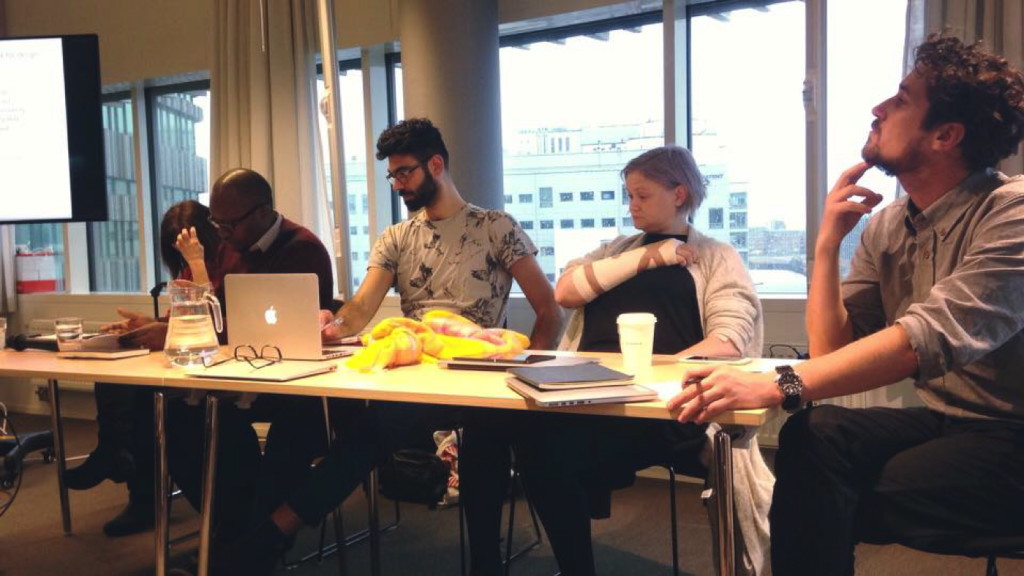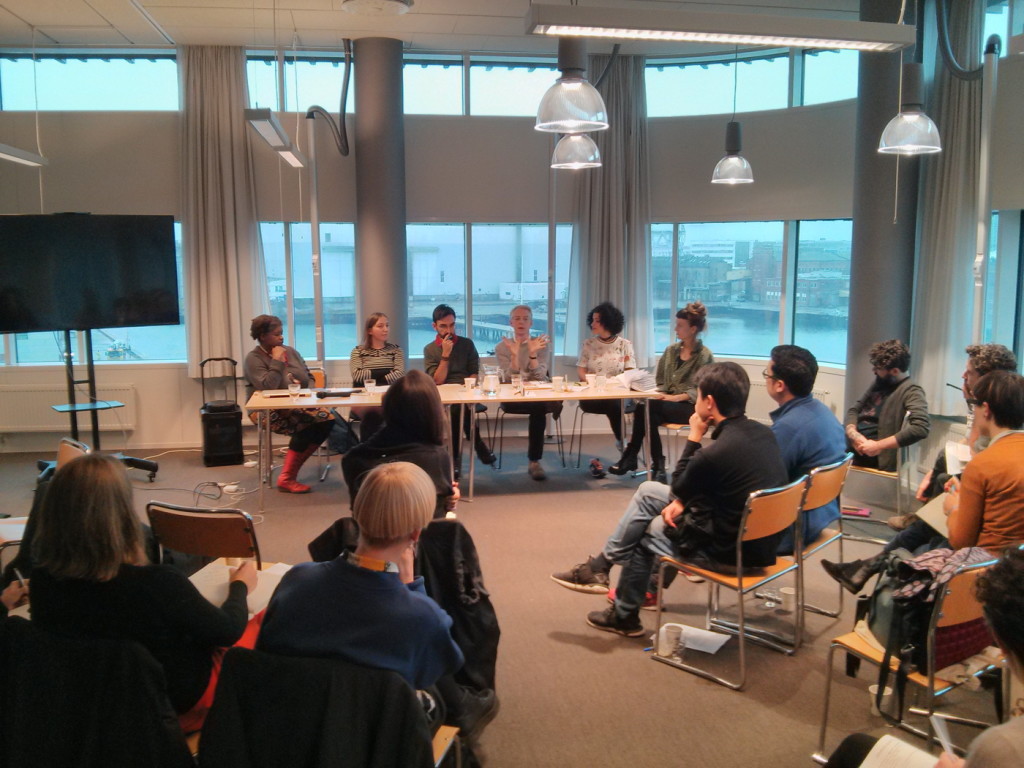12.11.2016
conference: Design, conflicts and power relationships
Presentation of Max Mollon’s paper at the “Intersectional perspectives on design, politics and power symposium”, the first symposium by the decolonisingdesign.com collective. Elizabeth (Dori) Tunstall, Clive Dilnot and Pinar KayganSchool were present at “Arts and Communication (K3), Malmö University” (Sweden) from the novembre the 14th to 15th 2016.
Abstract:
Contemporary issues of occidental society are multi-faceted and addressing them needs bringing multiple points of views around the table. However, making every voices heard is a challenge, especially the ones in the margins. On the other hand, the concept of intersectionality allows to consider how various categories – including sectarian ones as race, gender, age, ability… – simultaneously compose traits of one’s identity. Here, rather than focusing on identity constitution or intersections of various categories, I address “domination” as a common attribute to these vertical relationships. In fact, many of these oppressions remain silent, because of being untold, unthought-of or unknown. They remain embedded and hidden in everyday life and everyday objects. Indeed, human-made objects often support these state of power – as they involve many actors and assumptions in their making and using. But they can also allow to identify them and to interfere with them, opening a space for horizontal discussion. I argue that “Speculative and Critical Design” (SCD) artefacts have this potential when bringing a state of “dissensus”.
The present text is a work in progress. Its main contributions are: a case study using a conflictual artefact to trigger participant responses, using SCD in collective discussion context; the firsts empirical results; and the future research directions that emerged from them. These research leads – based on new connections between existing academic works –are open to discussion with the symposium members before further development. The case study does not directly allow to avoid oppression to take place, neither to unveil it publicly. Rather, it allowed me to spot it, it allowed the participants to talk about the conflictual artefact, but most of all it allowed them to talk to each other despite the state of power.
Based on this I briefly enumerate research directions and related literatures, under two main strategies: seating in-between; and breaching the norm. And I promote the use of the “dissensus” in “Participatory Design” contexts.
More info:
Paper online here
PDF presentation
Notes of the PDF presentation
Event page

